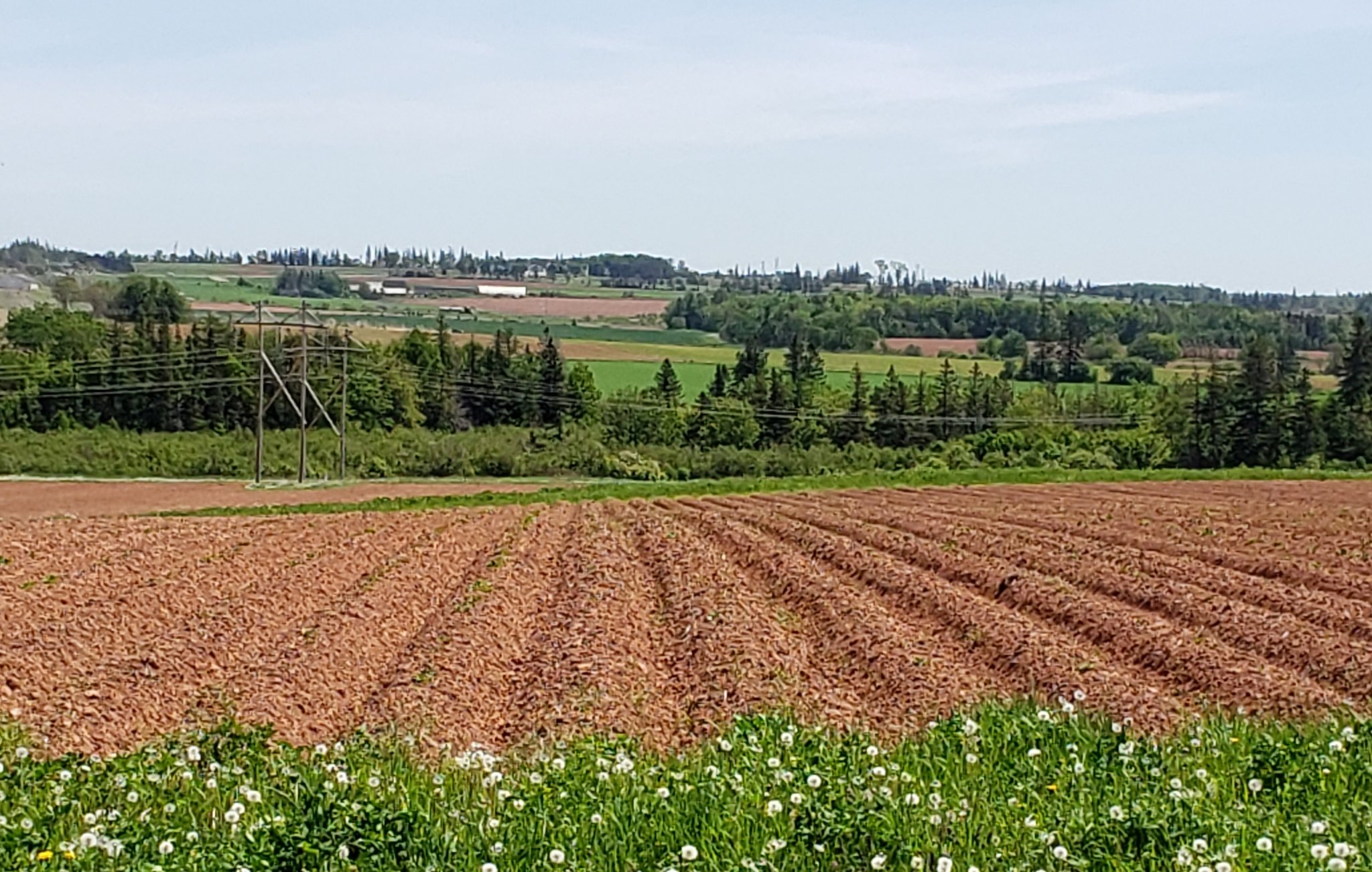
18 Jun Agronomy Updates – June 18th
Hi everyone,
It’s a hot, sunny week in PEI. Potatoes are emerging, forages and grain are growing fast…and we need some rain again. Doesn’t look like much in the forecast until next week, but the long-range forecasts have been more erratic than recent years, so hard to trust more than a couple of days in advance.
One good thing is that as dry as it has been in the western two-thirds of the Island, there is still a significant amount of soil moisture below the top couple of inches. We’re not in a bad position at the moment, but we’ll need some good moisture soon to get the crop off to a strong start.
A few things to think about as folks finish up hilling/herbicide sprays and transition to other tasks:
Crop Scouting:
I’m already seeing a lot of insect activity in fields, particularly flea beetles doing quite a number on some of the weeds. Our relatively mild winter without a lot of depth of frost and not many freeze-thaw events will likely result in more insect pressure than we saw last growing season. It’s never too early to be visiting your fields, checking on crop emergence/progress, and scouting for disease/insects. Many growers use a scouting service or agronomist to help them keep tabs on the crop. New precision agriculture tools can allow scouts/agronomists to communicate what they find in fields in a site-specific manner using platforms such as Climate FieldView, OneSoil, or other similar platforms. If you aren’t already using one of these platforms to get satellite imagery and site-specific scouting notes for your fields, it might be worth your time to explore those options.
For those that are doing your own scouting or who hire some summer staff to help you with scouting, the Department of Agriculture is hosting an online scouting workshop next Tuesday, June 23rd from 9 am to 3 pm. To register, please contact Lorraine MacKinnon with with the subject line “Potato Crop Scout Webinar link, please!”
In addition, the Potato Fieldworker Meetings will be resuming starting on June 30th at 7:30 am. The first meeting will be online, but there is hope to be able to do in-person meetings again before long. Watch your inbox for a link to this meeting.
Soil Building Crops/Fertility Notes:
I’ve talked about soil-building crops in my last couple of updates, but I would say that now is the perfect time to get some of those warm-season grasses and multi-species mixtures in the ground.
Seeing as the top of the soil profile is pretty dry in most of the province, consider adjusting your seeding depth to make sure there is adequate moisture for germination. For sudangrass/pearl millet, recommended seeding depth is at least 1 inch to 1.5 inches deep. Planting too shallow in dry soil conditions will result in poor germination/emergence. Particularly when the soil is warm, you can afford to plant a little deeper.
Also, consult your soil tests for your field when making crop selections. If you have a low pH field (less than 6.2), you’re not likely going to have a great crop of alfalfa. Likewise if your potassium (K) levels are quite low. If your soil tests are low for a specific nutrient, make sure you address that with your fertility program.
A couple of specific fertility notes:
– Just about any crop you plant is going to need supplemental Nitrogen (N) to get established. Don’t starve your soil-building crop of N…it’s required to build the biomass (both above and below ground) to flourish and help you build soil organic matter and soil structure. Different crops require different levels of supplemental N. For example, buckwheat generally requires only 30-40 lbs/acre N as a green manure crop, while a mustard green manure crop may require upwards of 100 lbs/acre to get the maximum benefit.
– Pay attention to sulphur. Make sure that you have adequate sulfur in your fertilizer blends, especially if your soil S tests are medium to low. We don’t get “free sulphur” from the atmosphere anymore like we used to, so make sure you are supplementing it. Brassica crops like mustard or oilseed radish particularly need additional sulphur, but so do a lot of legume species.
– If you are taking a first crop of hay/silage off of a forage field and don’t intend to take a second cut off, those are great fields to apply manure/compost to. The regrowth will make great use of that amendment and capture those nutrients without the need for tillage. Particularly if you have access to liquid manures!
Cull Pile Deadline – June 15th
Just a reminder that the deadline to get cull piles covered was June 15th. It is very important to have cull piles covered to prevent the spread of seed-borne diseases such as late blight, early blight, and PVY. This is particularly important this year, as the improved spring weather should accelerate seed germination and there is a greater volume of unused seed/cull potatoes around the countryside. Do your part to minimize the spread of disease!
Also, a reminder about Dr. Peters’ Potato Pathology Survey – only takes 10-15 minutes to provide your input on AAFC disease management research!
Potato Pathology Survey – AAFC (link)
Enjoy the warm weather, and hopefully we’ll see some timely rains before too long. As always, feel free to give me a call or send me an email/text if you have questions or want to chat about anything agronomy/research related.
Cheers
Ryan
